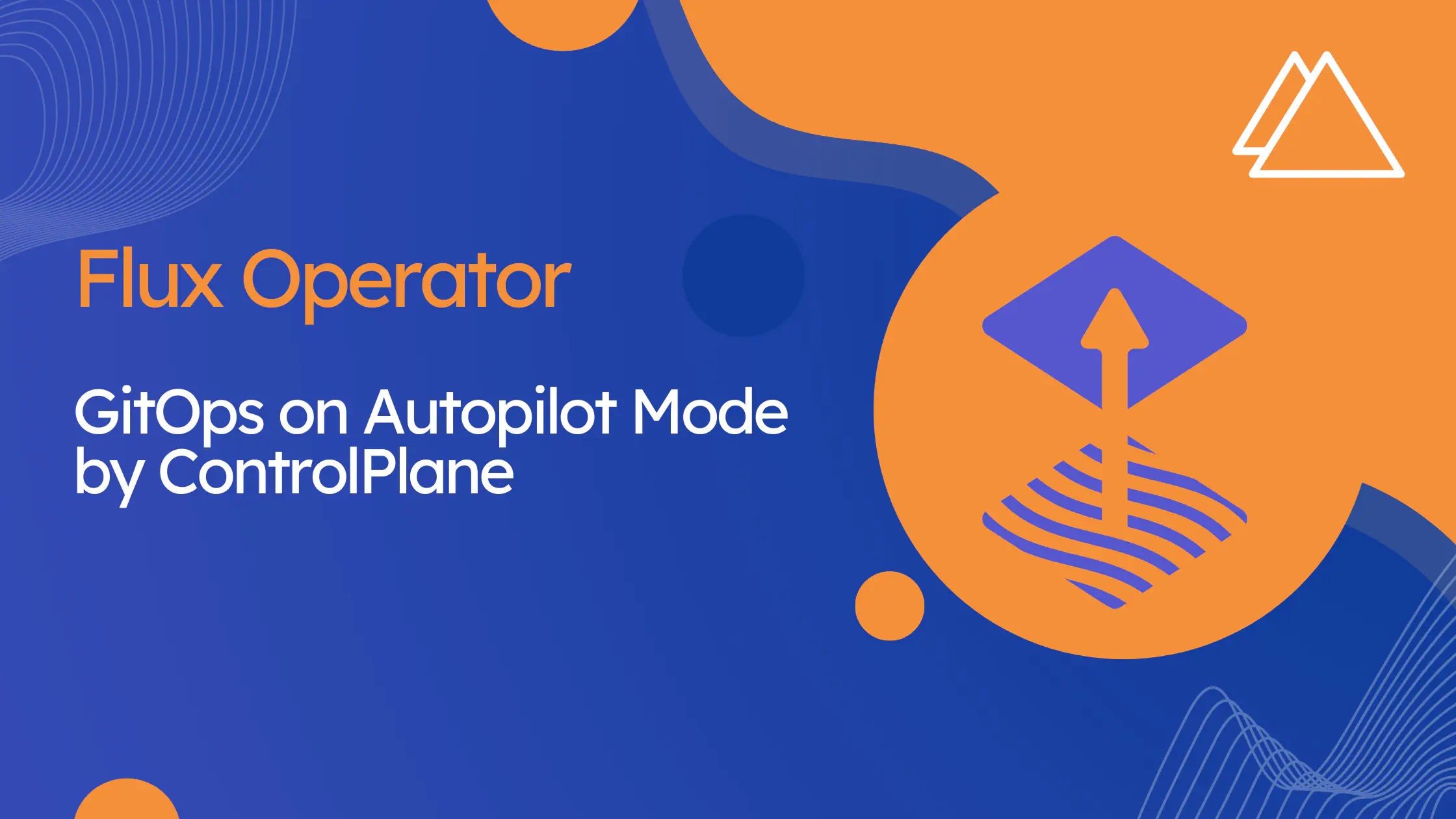Introducing the Flux Operator - GitOps on Autopilot Mode

In this article, we introduce the Flux Operator, a new component in the Flux CD ecosystem that automates the lifecycle management of Flux components and streamlines GitOps workflows for Kubernetes clusters.
We’ve been working on the Flux Operator since the beginning of 2024, and we are excited to announce that the project is being used in production by several significant organisations. The operator simplifies the adoption of GitOps practices for organisations of all sizes, and we are looking forward to the feedback from the Flux community.
Features
The operator offers an alternative to the Flux Bootstrap procedure, it removes the operational burden of managing Flux across fleets of clusters by fully automating the installation, configuration, and upgrade of the Flux controllers based on a declarative API.
Advanced Configuration Made Easy
The operator simplifies the configuration of Flux multi-tenancy lockdown, sharding, horizontal and vertical scaling, and persistent storage, allowing fine-tuning of the Flux controllers with Kustomize patches.
When it comes to upgrading Flux, the operator provides a seamless experience by automatically applying the latest Flux version based on the specified semver range, without manual intervention. Moreover, the operator migrates the Flux custom resources stored in Kubernetes etcd to the latest API version, keeping the custom resources in sync with their definitions.
For a detailed guide on how to configure Flux using the operator, please see the Flux Controllers Configuration documentation. A dedicated guide on how to horizontally scale the Flux controllers can be found at Flux Sharding Configuration.
Cluster Synchronization
The operator offers flexible synchronization strategies where users can choose to sync the cluster state from Git repositories, OCI artifacts and S3-compatible storage.
On high-regulated environments, the operator can be configured to fetch the desired state from container registries which reside in private networks alongside the Kubernetes clusters. The operator supports OIDC-based authentication when fetching OCI Artifacts from private registries eliminating the need for static credentials and long-lived tokens.
Find more information about the Flux synchronization strategies in the Flux Cluster Sync Configuration guide.
Deep Insights
The operator provides deep insights into the delivery pipelines managed by Flux, including detailed reports and Prometheus metrics about the Flux controllers readiness status, reconcilers statistics, and cluster state synchronization.
The automatically generated report can be queried using the Kubernetes API and is
available as a custom resource called FluxReport. The operator exports metrics
for all Flux custom resources found in the cluster, users no longer need to
rely on kube-state-metrics to monitor Flux. For more information, see the
Flux Monitoring and Reporting guide.
OpenShift Compatibility
The operator makes Flux compatible with Red Hat OpenShift and can be installed on OpenShift and OKD clusters using the Operator Lifecycle Manager (OLM) directly from the Red Hat Community Operators catalog or from OperatorHub.io.
Enterprise Support
The operator is a key component of the ControlPlane Enterprise offering, and is designed to automate the rollout of new Flux versions, CVE patches and hotfixes to production environments in a secure and reliable way.
The operator periodically checks if ControlPlane has patched the Flux images with the latest security updates and automatically applies the patches to the Flux controllers running in the cluster.
The operator is end-to-end tested along with the ControlPlane Flux distribution on the latest Kubernetes going back six minor versions, ensuring compatibility with the most popular Kubernetes distributions such as Amazon EKS, Azure AKS, Google GKE and Red Hat OpenShift.
Get Started with the Flux Operator
To install the operator on Kubernetes, users have multiple options, including Helm, Terraform, OpenTofu, OperatorHub, Pulumi, and kubectl. The operator deployment does not require any additional configuration, as it comes with sensible defaults.
Example of installing the Flux Operator using Helm:
helm install flux-operator oci://ghcr.io/controlplaneio-fluxcd/charts/flux-operator \
--namespace flux-system \
--create-namespace
Example of configuring the Flux instance:
apiVersion: fluxcd.controlplane.io/v1
kind: FluxInstance
metadata:
name: flux
namespace: flux-system
annotations:
fluxcd.controlplane.io/reconcileEvery: "1h"
fluxcd.controlplane.io/reconcileTimeout: "5m"
spec:
distribution:
version: "2.x"
registry: "ghcr.io/fluxcd"
artifact: "oci://ghcr.io/controlplaneio-fluxcd/flux-operator-manifests"
components:
- source-controller
- kustomize-controller
- helm-controller
- notification-controller
- image-reflector-controller
- image-automation-controller
cluster:
type: kubernetes
multitenant: false
networkPolicy: true
domain: "cluster.local"
kustomize:
patches:
- target:
kind: Deployment
name: "(kustomize-controller|helm-controller)"
patch: |
- op: add
path: /spec/template/spec/containers/0/args/-
value: --concurrent=10
- op: add
path: /spec/template/spec/containers/0/args/-
value: --requeue-dependency=5s
sync:
kind: GitRepository
url: "https://github.com/fluxcd/flux2-kustomize-helm-example.git"
ref: "refs/heads/main"
path: "clusters/production"
The Flux instance can be customised in various ways. For more information, refer to the configuration guide and the cluster sync guide.
On production environments, the operator installation and the Flux instance configuration can be done at cluster provisioning time using Terraform, OpenTofu or any other IaC tool that supports Helm. For an example of how to install the operator with Terraform, see the Terraform module example.
Migration to the Flux Operator
For existing Flux installations, migration to the Flux Operator is straightforward and can be done with zero downtime. The operator is designed to take over the management of the Flux components seamlessly from Flux CLI, Helm, Terraform, and has been tested with Flux installations going back to v2.2.
For a detailed guide on how to migrate from Flux CLI bootstrap to the Flux Operator, please see the Flux Migration Guide.
What’s Next?
We plan to evolve the Flux Operator with more features that will further simplify the GitOps workflows and Flux usage in production environments.
For the next release, we are working on adding a high-level abstraction for defining and managing Flux resources and related Kubernetes objects as a single deployable unit. The new API is designed to reduce the complexity of Kustomize overlays by providing a compact way of defining different configurations for a set of workloads per tenant and/or environment.
A preview of the new API will be available in the upcoming release, and we encourage the Flux community to provide feedback and help us shape the future of the operator.
Stay tuned for more updates and please follow the Flux Operator project on GitHub.
Related blogs

Flux D2 Reference Architecture – Gitless GitOps for Secure Multi-Tenancy

Ephemeral Environments for GitLab Merge Requests with Flux Operator

